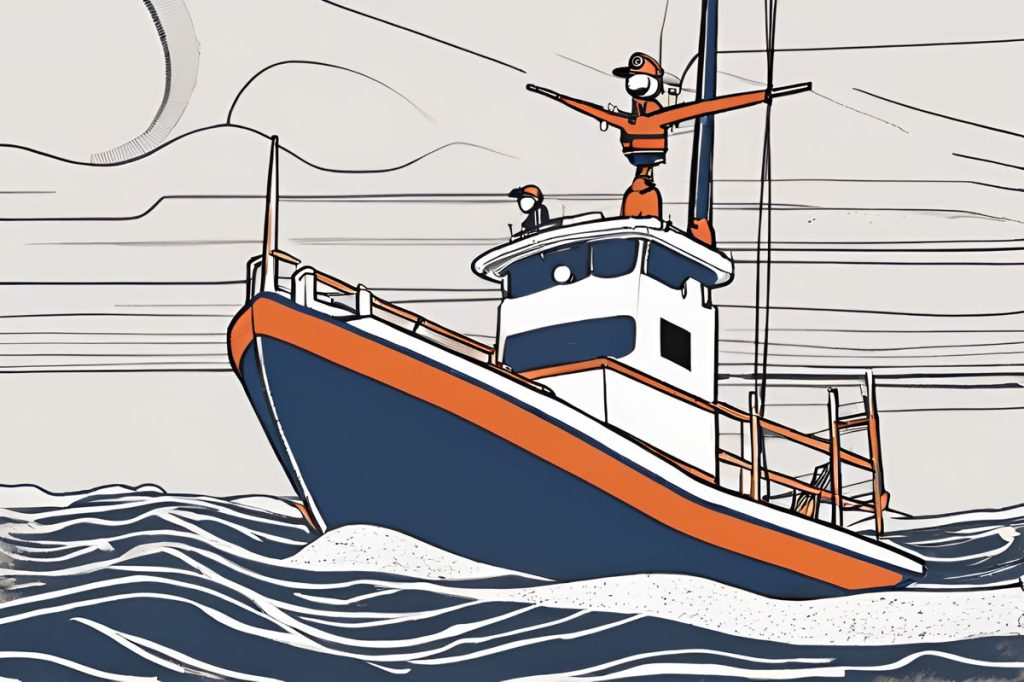Two individuals were rescued from a sinking boat off the coast of Limassol bay by the coast guard under the national plan Nearchos. They were transported to Limassol port for medical attention, with their current conditions unknown.
What happened off the coast of Limassol with the sinking boat?
Two individuals were rescued from a sinking vessel off the coast of Limassol bay. The coast guard, mobilized by the JRCC under the national plan Nearchos, quickly responded to the distress signal, saving the occupants and transporting them to Limassol port where they received medical attention. The conditions of the rescued are currently unknown.
A boat with two people on board sank off the coast of Limassol on Tuesday afternoon, with the coast guard staging a rescue. According to the Search and Rescue Coordination Center (JRCC), at 4:15, the coast guard received information about a small vessel with two people on board sinking in the maritime area of Limassol bay, near the fish farms.
“The JRCC activated the national plan Nearchos by mobilising the coast guard’s patrol boat Morphou, which, after rescuing the two people in danger, transported them to the Limassol port and handed them over to an ambulance of the state health services (Okypy),” JRCC said after the incident. The conditions of the two people rescued are still unknown.
Maritime Mishaps and Measures
The dangers of the sea are as old as time itself. From rogue waves to unpredictable weather patterns, the risk of maritime accidents is ever-present. The incident off the coast of Limassol serves as a stark reminder of the perils that sailors and marine enthusiasts face on a regular basis. While the details of how the vessel came to sink are still emerging, the quick response of the JRCC underscores the importance of having a well-coordinated search and rescue operation in place.
In recent years, there have been significant advancements in maritime safety protocols and technology. With the advent of global positioning systems (GPS) and distress signal devices such as the Emergency Position Indicating Radio Beacon (EPIRB), it has become easier to pinpoint the location of vessels in distress, greatly aiding rescue efforts. The story of the two individuals rescued near Limassol may well have been very different without such technology and the well-rehearsed procedures of the JRCC.
Search and Rescue Coordination
The JRCC plays a pivotal role in ensuring the safety of lives at sea. Their operations often involve coordinating with multiple agencies, including the coast guard, navy, and local maritime authorities. The successful rescue of individuals from sinking vessels is a testament to their professionalism and the effectiveness of the protocols they follow. It is imperative that such organizations are adequately funded and supported to maintain their readiness for such emergencies.
Equipped with state-of-the-art facilities and experienced personnel, JRCC units are trained to respond swiftly to any maritime incident. Their ability to activate emergency plans, such as the national plan Nearchos, and deploy resources like the patrol boat Morphou, is crucial for time-sensitive operations. The lives saved off the coast of Limassol add to the many that JRCC teams have preserved over the years through their diligent and prompt actions in the face of danger.
Aftermath and Support
Following the rescue, the individuals were reportedly transferred to local health services for evaluation and care. The aftermath of such events is not only about the physical well-being of those involved but also encompasses their mental and emotional recovery. It is essential for healthcare providers to offer comprehensive support, including psychological services if necessary, to ensure the full recovery of those who have experienced such traumatic events.
The community often rallies around those affected by maritime accidents, offering support and aid. Local organizations and charities might step in with additional resources, illustrating the solidarity and compassion of coastal communities. The incident also serves as an opportunity for awareness and education about safety measures and emergency preparedness for those who venture onto the sea.
What happened off the coast of Limassol with the sinking boat?
Two individuals were rescued from a sinking vessel off the coast of Limassol bay. The coast guard, mobilized by the JRCC under the national plan Nearchos, quickly responded to the distress signal, saving the occupants and transporting them to Limassol port where they received medical attention. The conditions of the rescued are currently unknown.
What are some common dangers faced at sea?
The dangers of the sea are numerous, ranging from unpredictable weather patterns to rogue waves. Maritime accidents are a constant risk for sailors and marine enthusiasts. With advancements in technology like GPS and distress signal devices such as EPIRB, the ability to locate and rescue vessels in distress has significantly improved.
How does the JRCC coordinate search and rescue operations?
The JRCC plays a crucial role in coordinating search and rescue operations at sea. They work closely with various agencies like the coast guard, navy, and local maritime authorities. Equipped with advanced facilities and trained personnel, JRCC units are able to respond swiftly to maritime incidents by activating emergency plans and deploying necessary resources.
What support is available for individuals involved in maritime accidents?
Following a maritime accident, individuals are often provided with medical evaluation and care. It is essential for healthcare providers to offer comprehensive support, including psychological services if needed, to aid in the full recovery of those affected. The community also plays a role in offering support and resources to those involved in such incidents.

